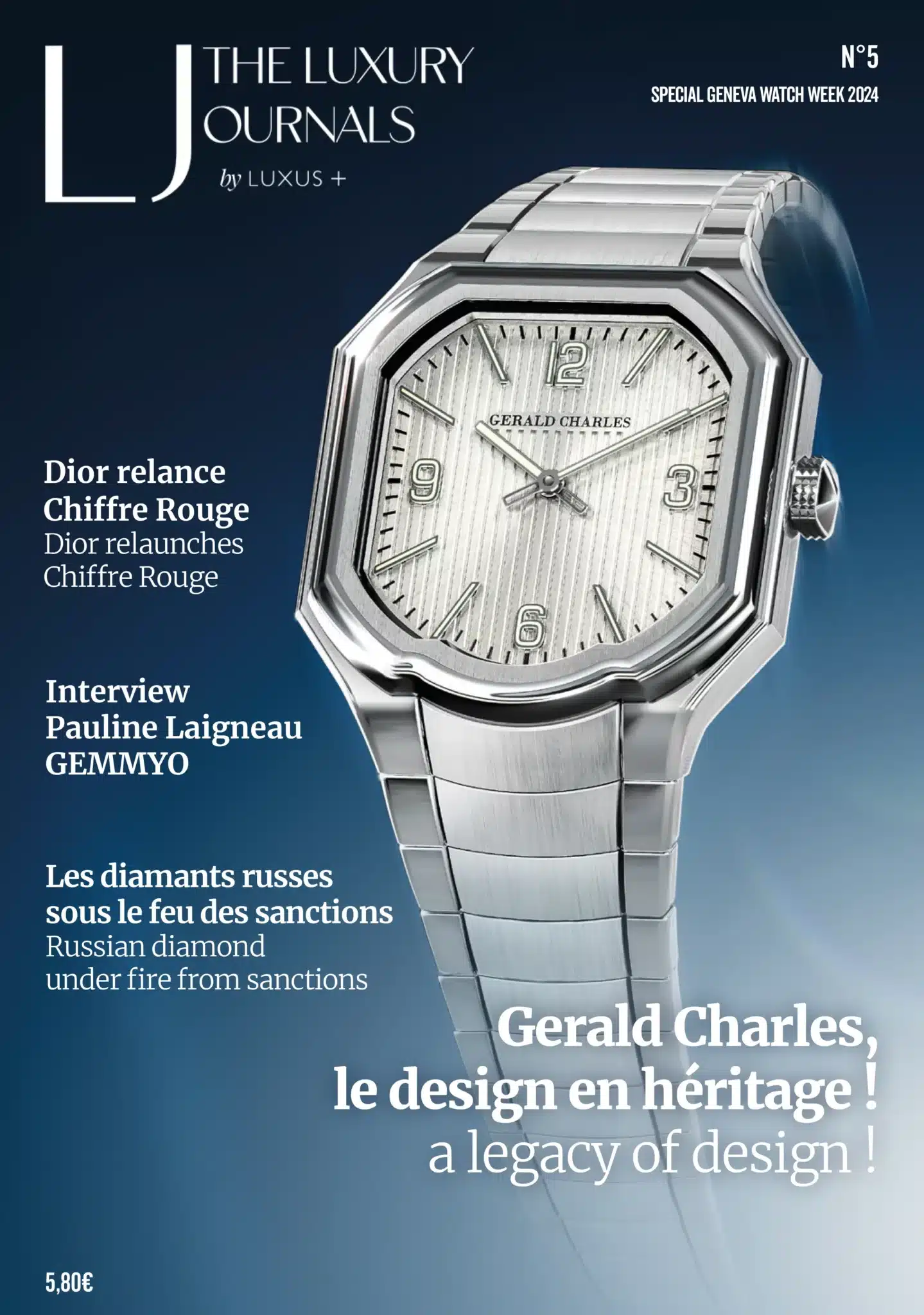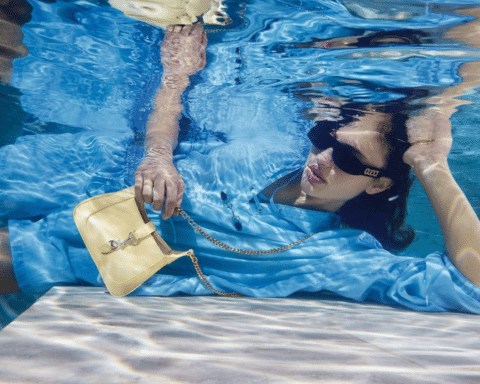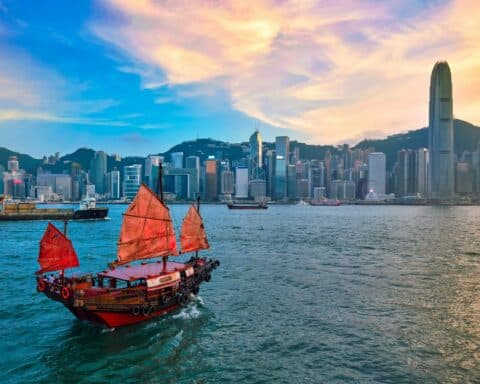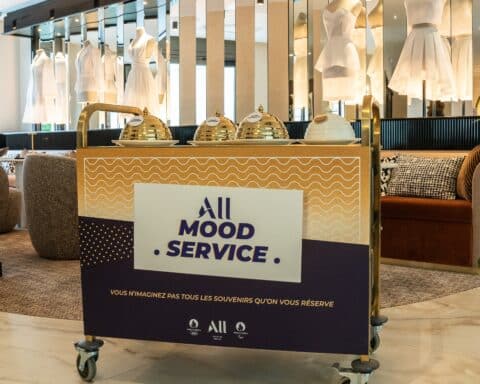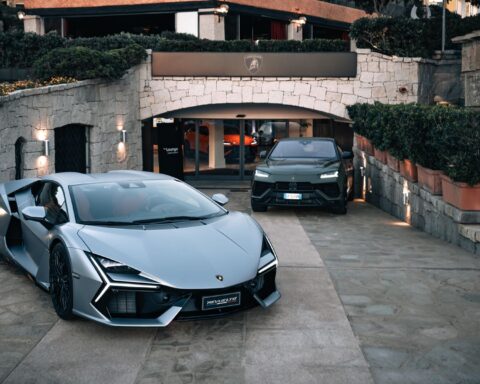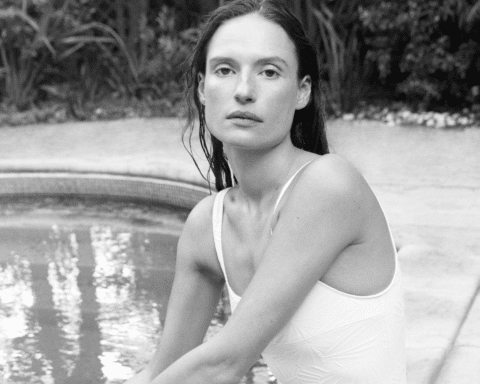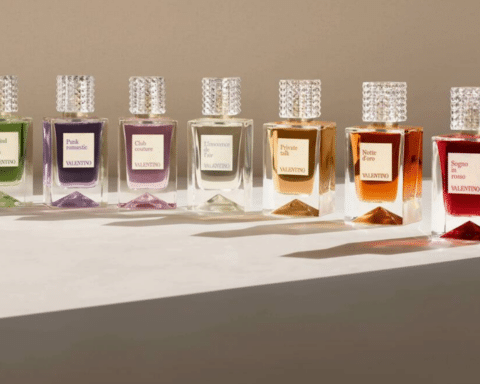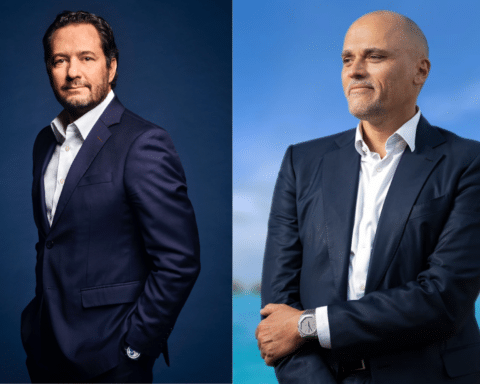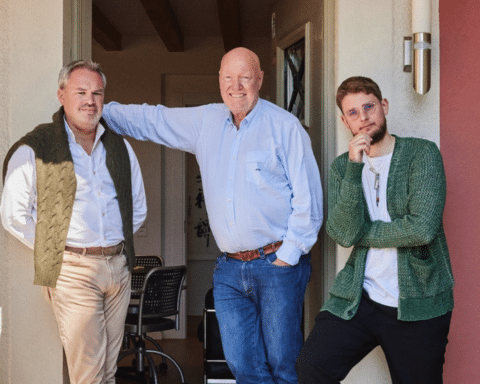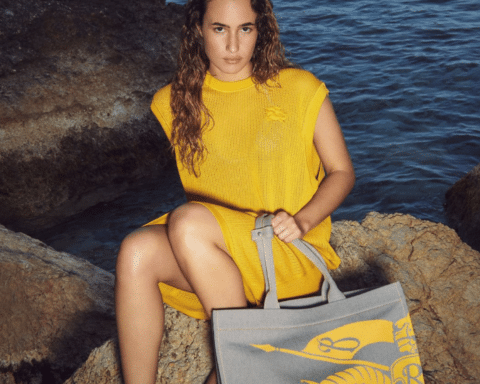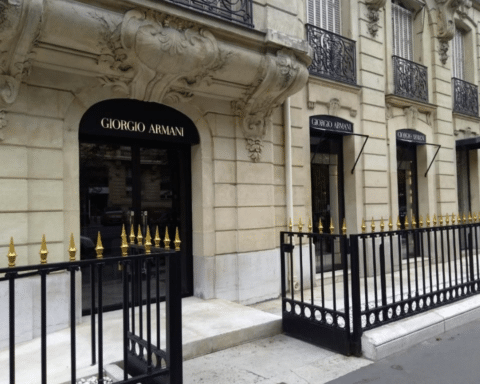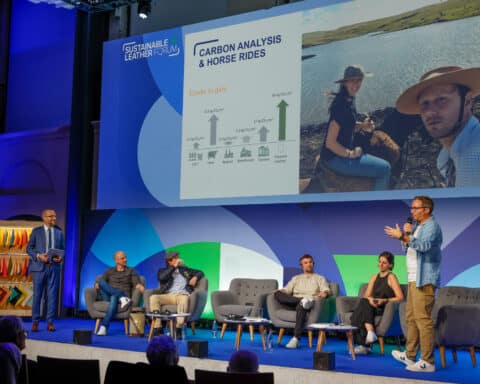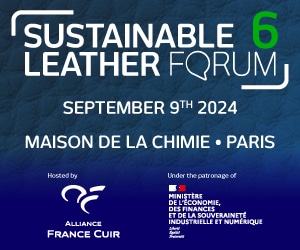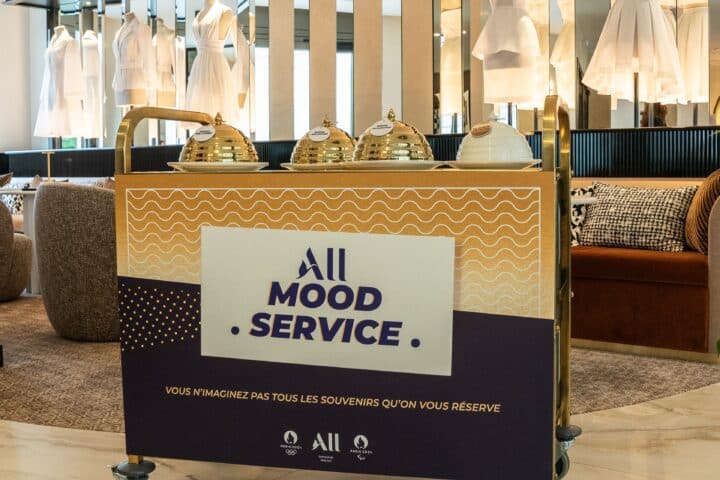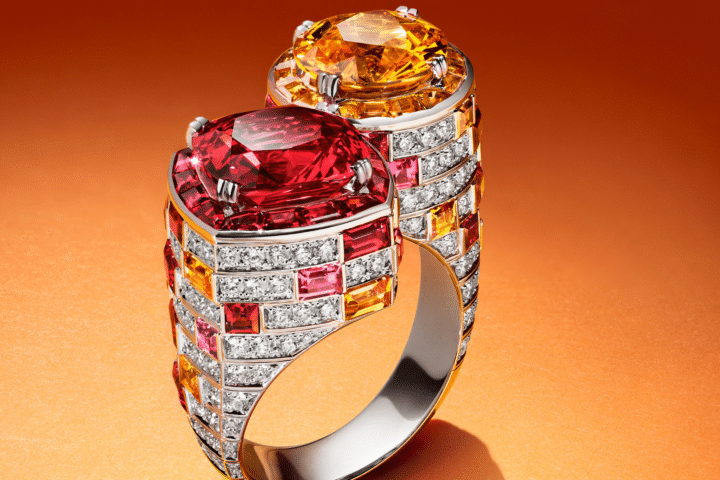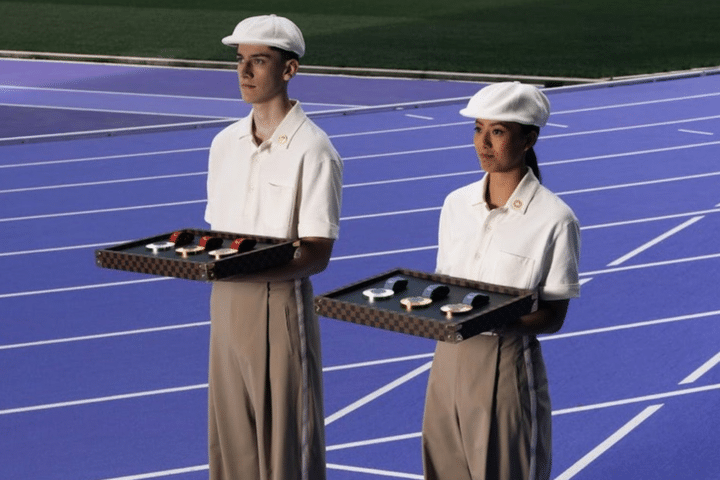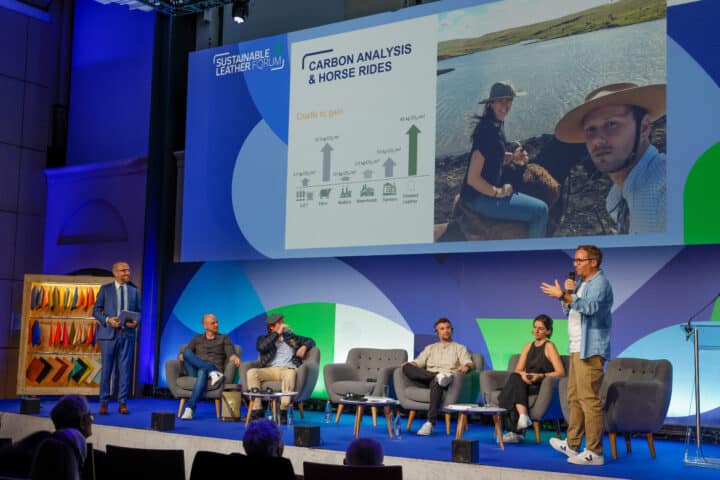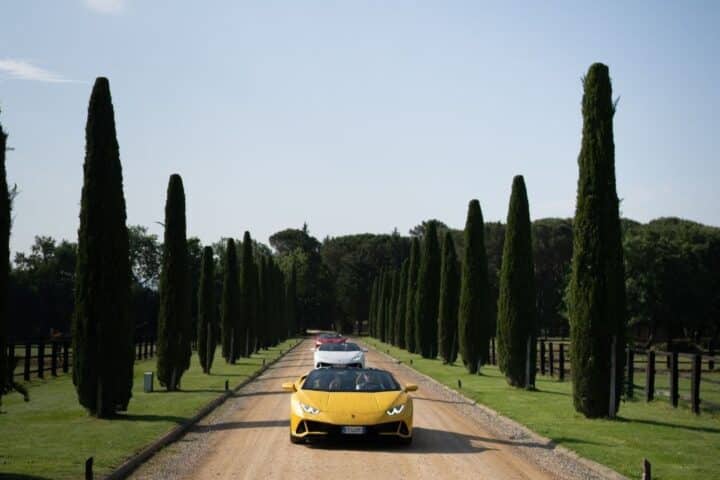A must-see annual event for the fashion and beauty world in the Californian desert, the Coachella music festival has also been attracting luxury brands for several years. The entry ticket – very high – guarantees them a refined segmentation for a viral event attracting the international golden youth.
Since its creation in 1999, the “Coachella Valley and Music Festival” has had all the makings of a utopia.
Located in Indio – two hours drive from Los Angeles and 30 minutes from Palm Springs – the event takes place in mid-April on two consecutive weekends, on the lawn of a 2.4 km² polo field, under the blazing sun of the Colorado desert.
However, year after year, the event, benefiting from unparalleled media coverage thanks to social networks and an array of celebrities on stage and in its alleys, has not stopped growing.
A festival that rhymes with gigantism
The six days of festivities attract nearly 200,000 participants, making it one of the largest music festivals in the world. Its size surpasses the two other major American music festivals, South By Southwest (SXSW) in Austin and the Ultra Music Festival in Miami.
Its festival-goers flock 70% from all over the United States, with only 21.1% of attendees coming from California, according to data from a 2019 study.
According to the same study, there’s also a sizable portion of international clientele, with 22.6% of festival-goers from outside the United States.
In fact, the festival has received so much media attention that it has become part of the vernacular. Former U.S. President Barack Obama pronounced, “This is not a rock concert, this is not Coachella” as part of a call for votes for the 2018 presidential campaign.
Engaged pop singer and Generation Z darling Billie Eilish confirms this in the introduction to the Youtube-produced documentary Coachella: 20 Years in The Desert (2020): “Everyone knows Coachella. Even if you don’t care about music, you know what it is.”
However, if such a crowd is ready to pay its “3-day pass”, 499 dollars (464 euros), or its VIP pass, 1199 dollars (1115 euros) – excluding additional costs (accommodation, food, shuttle …) – it is well to see, in the same place, the biggest American and international stars of pop, hip-hop, and electro. Prince, Madonna, Daft Punk, Beyoncé, BlackPink, Amy Winehouse, Billie Eilish, The Weeknd, Justice… almost all have already performed at Coachella.
In fact, the 2023 edition, from April 14 to 23, featured more than 150 artists – all musical styles combined – on six different stages. The festival has earned a solid reputation for its programming, attracting tourists and fans.

And the 2023 edition had everything to stir up the crowds: the South Korean girl band BlackPink, the American soul singer Franck Ocean, the British superstar DJ Calvin Harris or the Puerto Rican king of Latino sound, and the leader of the streaming music Bad Bunny. A sign that the phenomenon has become global: none of the year’s headliners is white, while the share of American artists is greatly reduced compared to previous editions.
On the other hand, French-speaking artists are not left out, with the Belgian singer Angèle ready for her very first Coachella or the new formation of the late Christine & The Queens, RedCar.

Although the organizers never communicate the financial impact of the festival, the announcement of the cancellation of the 2020 and 2021 editions – due to the pandemic context – gives valuable information. Paul Tollett, president and CEO of Goldenvoice, the events company that organizes the festival and a subsidiary of AEG Live, said that the two cancellations would result in a loss of $700 million.
A figure that includes the ticketing, the sponsoring of the artists, the merchandising, refreshments, stands, and other catering points. Our colleagues from Numéro magazine have mentioned the prohibitive prices charged since 2014, with a small bottle of water at 4 dollars and a sandwich at 13 dollars.
Finally, gigantism is visible even in the ephemeral artistic installations, some of which have become recurrent yearly, such as the second largest folding Ferris wheel in the world behind the Big Eye in London or the Spectra tower and its panoramic colored glass walls.
A revisited fairground setting that stands out against the San Jacinto Mountains and is no stranger to its success and iconography.
The Genesis of a global phenomenon
It all began in 1993 when GoldenVoice organized a new kind of concert for the punk rock band Pearl Jam. Challenged by Ticketmaster’s hegemonic pricing policy, the organizers moved the event to the Empire Polo Club, an equestrian club located in the Coachella Valley. Despite the off-center nature of the event, 25,000 people showed up.
That’s all it took for the directors of Goldenvoice, Paul Tollett and Rick Van Santen – event promoters who are increasingly involved in rave parties – to come up with the crazy idea of organizing the first 100% eclectic music festival in the United States at the exact location.
A concept that contrasts with the methods of promotion always in force in the Nineties in the United States where, since Elvis Presley, the artist leaves to the meeting of his fans via marathon tours through various American states.
From its genesis, Coachella summons the tradition of the very “peace and love” festivals of the West Coast, like Monterey Pop, Cal Jam, or Us Festival. The idea is also to compete with Glastonbury, which was already one of Europe’s largest music and entertainment festivals. This British festival welcomes them in the county of Somerset, in England, with nearly 100 000 people (142 000 today). It was knowing that they were only 1500 for the first edition (1970) and 12 000 from the second year, strong of the presence of David Bowie as the headliner! However, even though the festival attracts large crowds and takes place at the end of June, it regularly suffers from bad weather, quickly making the experience muddy and the camping on-site chaotic.
The co-founders also want to showcase talent, not stars, a decision that will change over time. Despite deep internal disagreements, co-founder Paul Tollett named the event after its host valley: Coachella.
When the festival opened in 1999, it was not yet attracting crowds. The first edition only welcomed 35,000 people, barely half of what the organizers expected. The second edition was canceled before being postponed in 2001 due to the purchase of their company GoldenVoice by the AEG group. This last one wishes to penetrate the concerts business, whereas the Staples Center’s concert hall has just taken place in Los Angeles: it asks the organizers of Coachella to renew. Coachella ended up not leaving the festival season, which it opens every year.

2006 marks the first passage, of course, with the performance of the very first star of the festival: Madonna, then in promotion for her album “Confession on a Dancefloor.” Paul Tollett had the idea to reserve the Sahara tent for her. With the event’s success, the president of Goldenvoice understood that a headliner was more than just a “nice to have”: it was an unprecedented means of attraction. From then on, Coachella will bring together talents and stars under its different stages, which look like giant teepees.
2011 marks a new turning point with broadcasting some of the festival’s concerts thanks to a new partnership with Youtube. Coachella’s notoriety then became viral.
So much so that all the tickets sold out that year in less than a week: 200,000 people were deprived of the festival. To calm the discontent, Paul Tollett has the idea to transform the test over two weekends in 2012, again unheard of in the United States!
But it was in 2018 that the event ceased to be a festival known only to fans of independent music and knows a planetary notoriety with the arrival of Beyoncé.
An undeniable rise in luxury
Originally a simple music festival, the event has since diversified to offer an open-air exhibition park with numerous art installations, parties, and a global experience. Fashion and beauty brands were quick to join the event as partners. This is the case of Revolve, the fashion website targeting generations Y and Z, which ends up proposing its own music festival within the festival. For its part, H&M, a partner since 2009, began to offer in 2015 its capsule collection, “H&M loves Coachella,” inspired by the trends spotted on site.
Moreover, with the rise of social networks and influencers, Coachella no longer attracts music lovers exclusively but also posers and all that the blogosphere counts of fashionistas.
Read also > [Investigation] What’s new in Luxury Retail? (Part 1/4)
Featured photo : © Matt Winkelmeyer/Getty Images for Coachella


